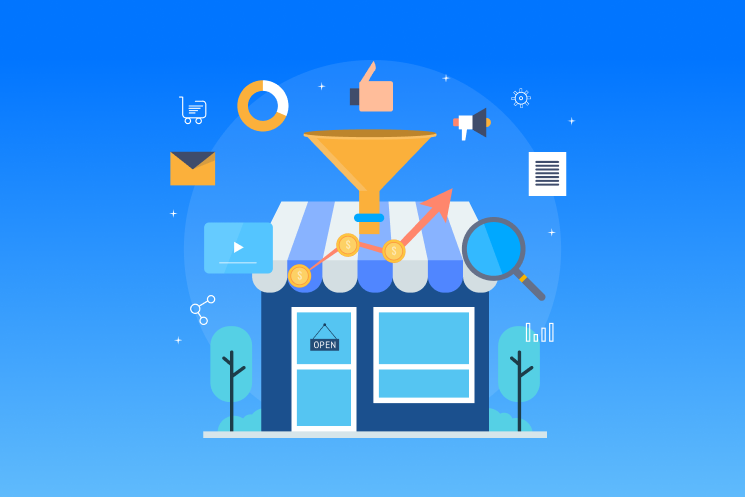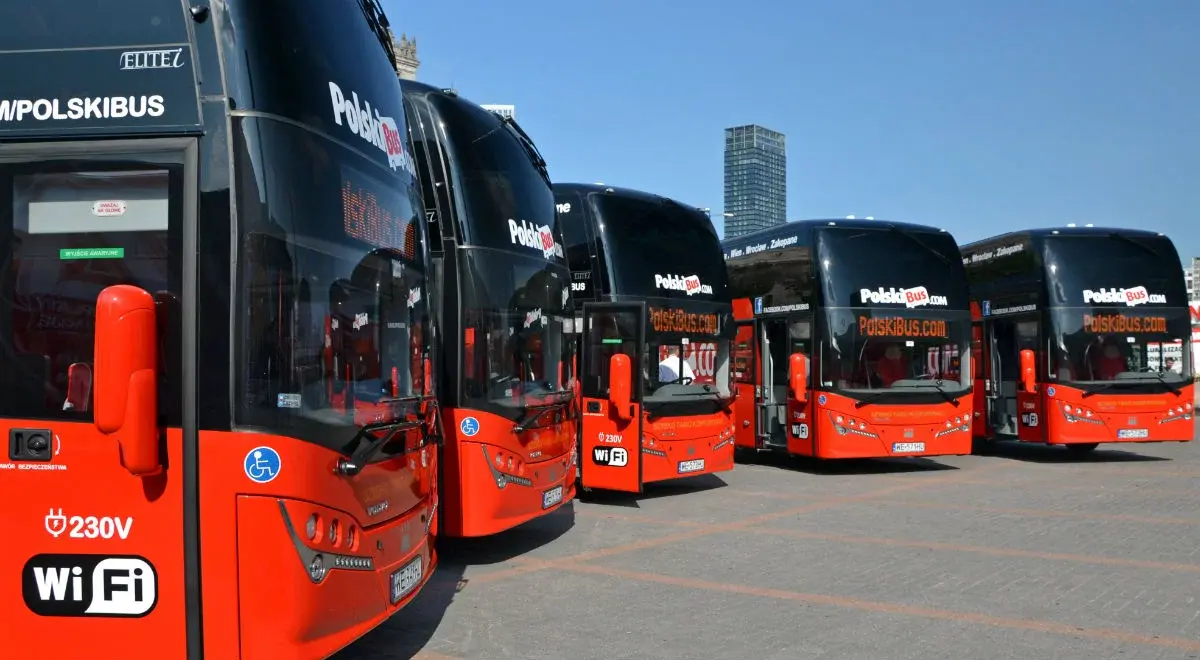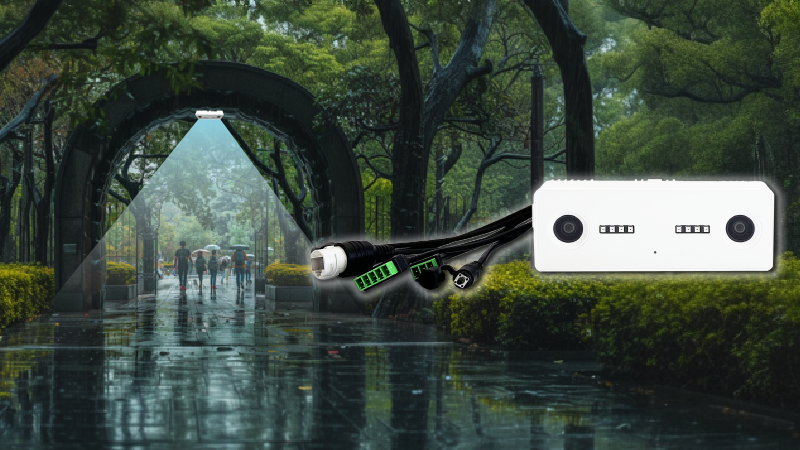What is Conversion Rate in Retail?
Conversion rate in retail is the percentage of visitors who make a purchase compared to the total number of visitors. For example, if 100 people visit your store and 30 buy something, your conversion rate is 30%. It’s a key metric because it focuses on turning existing traffic into sales, which is crucial for maximizing revenue without needing more visitors.
Why is it Important?
Measuring conversion rates helps evaluate true store performance beyond just sales figures. High sales might hide issues like visitors leaving due to long queues, poor service, or unavailable products. By tracking conversion rates, retailers can identify these gaps and address reasons for abandonment, ensuring more visitors become customers and boosting overall profitability.
How to Measure and Improve It?
To measure, compare the number of transactions to total visitors over a period, using tools like V-Count’s people counting sensors (Nano) for accurate traffic data. Improving it involves:
- Anticipating Traffic: Use data to staff peak hours and offer promotions.
- Reducing Queues: Implement queue management systems to minimize wait times.
- Optimizing Layout: Place popular products strategically to encourage purchases.
Research suggests these strategies can lead to significant profit increases, with major retailers seeing millions from even small improvements.
Survey Note: Detailed Analysis of Conversion Rate in Retail
This section provides a comprehensive exploration of conversion rates in retail, covering definitions, importance, measurement methods, and improvement strategies, with a focus on the latest trends and technologies as of April 14, 2025. The analysis is informed by recent industry reports, product specifications, and retail analytics insights, ensuring a thorough understanding for retailers aiming to optimize their operations.
Definition and Context
In retail, the conversion rate is defined as the percentage of visitors who complete a purchase compared to the total number of visitors. For instance, if 200 people visit a store and 50 make a purchase, the conversion rate is 25%. This metric is particularly vital in physical stores, where visitors are already present, offering a direct opportunity to convert interest into sales. With the rise of omnichannel retail, conversion rate now also encompasses actions like signing up for loyalty programs or engaging with in-store digital kiosks, reflecting a broader definition as of 2025.
Research by Retail Dive and Forrester in 2024 indicates that average in-store conversion rates range between 25% and 45%, depending on the sector, with luxury retail often seeing higher rates than discount stores. This means 55% to 75% of shoppers leave without purchasing, highlighting significant untapped potential. For context, e-commerce conversion rates typically hover between 2% and 5%, underscoring the higher conversion potential of physical stores when optimized correctly.
Importance of Measuring Conversion Rate
Measuring conversion rate is essential for evaluating a store’s true performance, going beyond metrics like total sales or revenue per store. While high sales figures might suggest success, they don’t account for visitors who leave without buying due to issues like stockouts, poor customer service, or long checkout times. Conversion rate data reveals these missed opportunities, enabling retailers to address underlying problems.
For example, a store with high traffic but low conversions may have operational inefficiencies, such as inadequate staffing during peak hours or a confusing layout. In 2025, with retailers leveraging AI and real-time analytics, understanding conversion rates helps optimize everything from staffing to personalized customer experiences. This is crucial, as even a 1% improvement can translate to millions in additional revenue annually for large retailers, according to Target’s 2024 data.
Measurement Methods
Accurate measurement requires reliable data on store traffic and sales. The process involves dividing the number of transactions by the total number of visitors over a specific period (e.g., hourly, daily) and multiplying by 100 to get a percentage. Modern technology, such as people counting systems, has made this feasible. V-Count, a leader in visitor analytics, offers solutions like the Ultima AI sensor with up to 99.9% accuracy and the Nano sensor with 99% accuracy, both used to track visitor counts at store entrances (Nano).
These sensors, equipped with AI-powered cameras and 3D imaging, capture real-time data on visitor counts, demographics, and dwell times. The data syncs to cloud-based platforms like V-Count’s BoostBI, where it’s cross-referenced with point-of-sale (POS) systems to calculate conversion rates instantly. Retailers also integrate heatmapping and RFID tracking to monitor customer movement, providing a holistic view. For omnichannel retailers, tools like Shopify Analytics or Adobe Experience Cloud combine in-store and online data, ensuring comprehensive measurement as of 2025.
Strategies for Improvement
Improving conversion rates involves leveraging data-driven strategies to enhance the shopping experience. Below is a detailed breakdown of key approaches, supported by recent trends and technologies:
| Strategy | Description | Example Tools/Technologies |
|---|---|---|
| Anticipate Store Traffic | Analyze peak hours using AI analytics to staff appropriately and offer promotions. | V-Count’s BoostBI, predictive analytics platforms |
| Optimize Staff Scheduling | Use employee performance metrics to deploy top performers during peak times, reducing costs off-peak. | AI-driven training platforms like Walmart’s Spark City |
| Reduce Queues and Wait Times | Implement queue management systems for real-time alerts and open additional checkouts as needed. | Queue-it, Qmatic, self-checkout kiosks |
| Improve Product Placement | Use zone analytics and heatmaps to place high-margin items in high-traffic areas. | V-Count’s zone analytics, RFID tracking |
| Integrate Omnichannel | Offer BOPIS (Buy Online, Pickup In-Store) and clienteling tools for personalized recommendations. | Shopify, Salesforce Einstein |
| Leverage AI for Personalization | Deliver tailored promotions based on in-store behavior, enhancing customer engagement. | Dynamic Yield, AI-driven heatmaps |
| Enhance Store Ambiance | Adjust lighting, music, and temperature using IoT sensors for a welcoming environment. | IoT sensors, AR/VR try-ons |
- Anticipate Store Traffic: AI-powered platforms like V-Count’s BoostBI analyze historical and real-time traffic data to predict peak hours, enabling retailers to allocate more staff or open express lanes. For example, retailers using predictive analytics have reported conversion rate increases of up to 10% by aligning resources with high-traffic windows.
- Optimize Staff Scheduling: AI tools analyze individual employee conversion rates and customer satisfaction scores to identify top performers. Scheduling these associates during peak periods maximizes sales, while off-peak reductions save costs. Digital training platforms, like Walmart’s Spark City app, upskill staff in real time, leading to measurable uplifts in conversions.
- Reduce Queues and Wait Times: Long lines are a top reason for cart abandonment, with Shopify reporting 60% of shoppers abandoning carts due to long waits in 2024. Queue management systems like Qmatic or Wavetec use AI to monitor lines in real time, alerting managers to open new checkouts. Frictionless checkout technologies, such as Amazon’s Just Walk Out, can boost conversions by up to 20%.
- Improve Product Placement: Zone analytics and AI-driven heatmaps track customer movement, identifying high-traffic areas. Retailers can place complementary items together, like chips near salsa, to increase cross-selling. Kroger’s partnership with Microsoft Azure uses AI to analyze shopper behavior, resulting in a 15% increase in cross-selling conversions.
- Integrate Omnichannel Experiences: Today’s shoppers expect seamless experiences across channels. Offering BOPIS streamlines pickup processes, encouraging add-on purchases, with Target’s 2024 data showing 30% of BOPIS customers making impulse buys in-store. Clienteling tools equip associates with purchase histories for personalized recommendations, enhancing conversions.
- Leverage AI for Personalization: AI platforms like Salesforce Einstein analyze customer data to deliver tailored experiences, such as real-time discounts based on in-store behavior. McKinsey’s 2024 retail study reports conversion rate increases of 5-15% with hyper-personalization, driving higher engagement and sales.
- Enhance Store Ambiance: Ambiance influences purchasing decisions. IoT sensors monitor lighting and temperature, creating a welcoming environment. Apple Stores’ experiential design, for example, increases dwell time and conversions by fostering a relaxed atmosphere.
Impact and Future Outlook
The impact of these strategies is significant, with major retailers realizing that even a 1% improvement in conversion rates can equal millions in profits. V-Count’s solutions, particularly the Nano device and BoostBI, are designed to support these efforts, offering real-time data and analytics to optimize operations. As of 2025, the retail landscape continues to evolve, with AI and omnichannel integration becoming non-negotiable for staying competitive. Retailers who invest in these strategies not only boost conversions but also build lasting customer loyalty, ensuring long-term success in a dynamic market.







